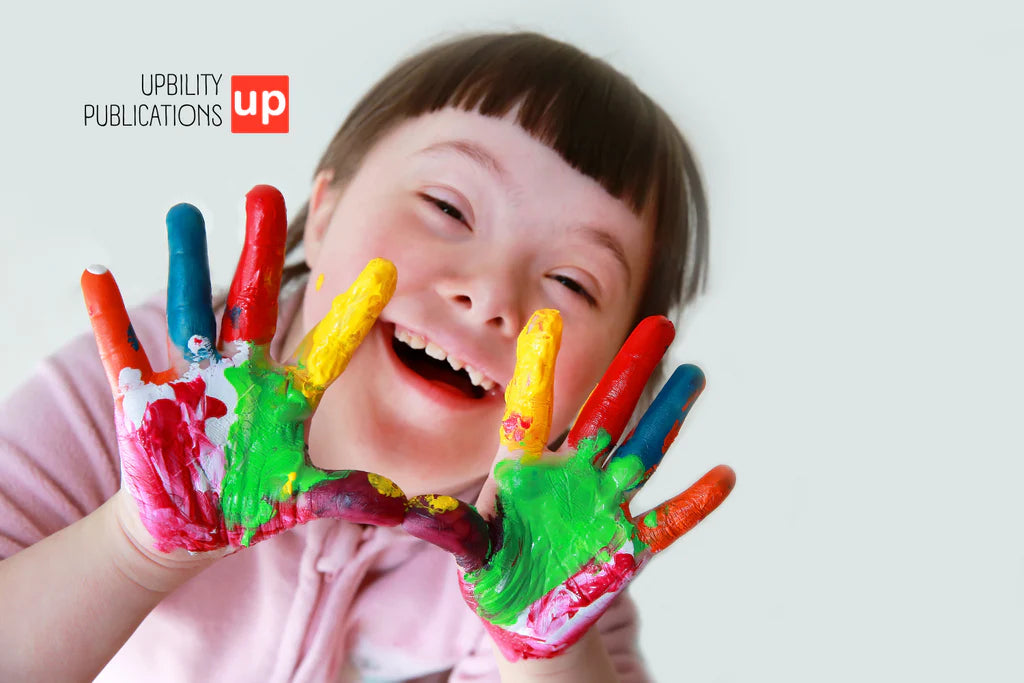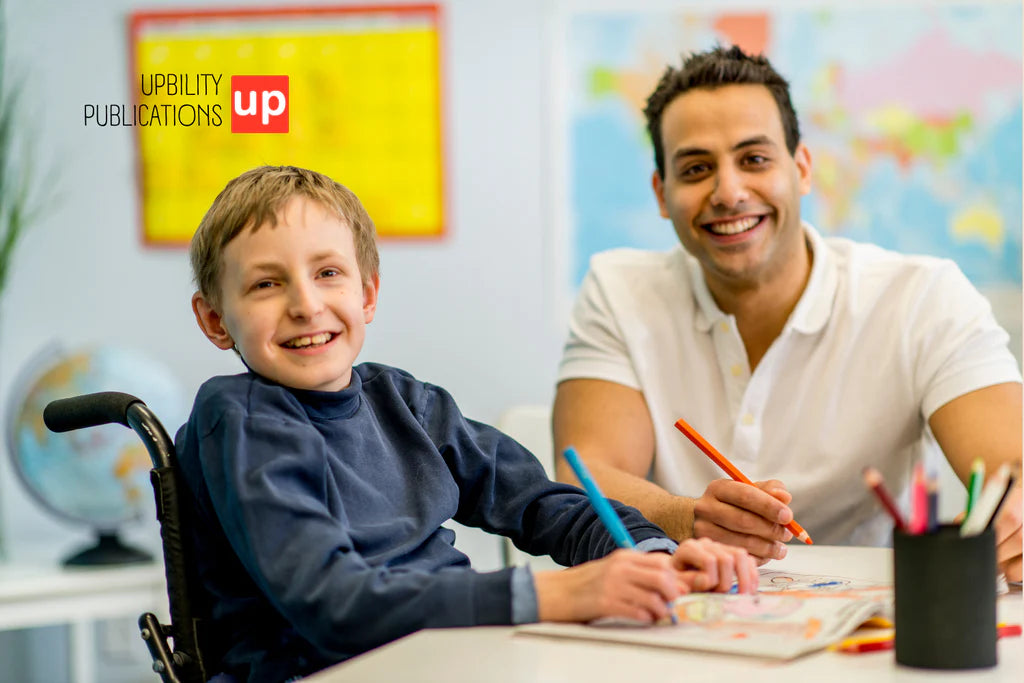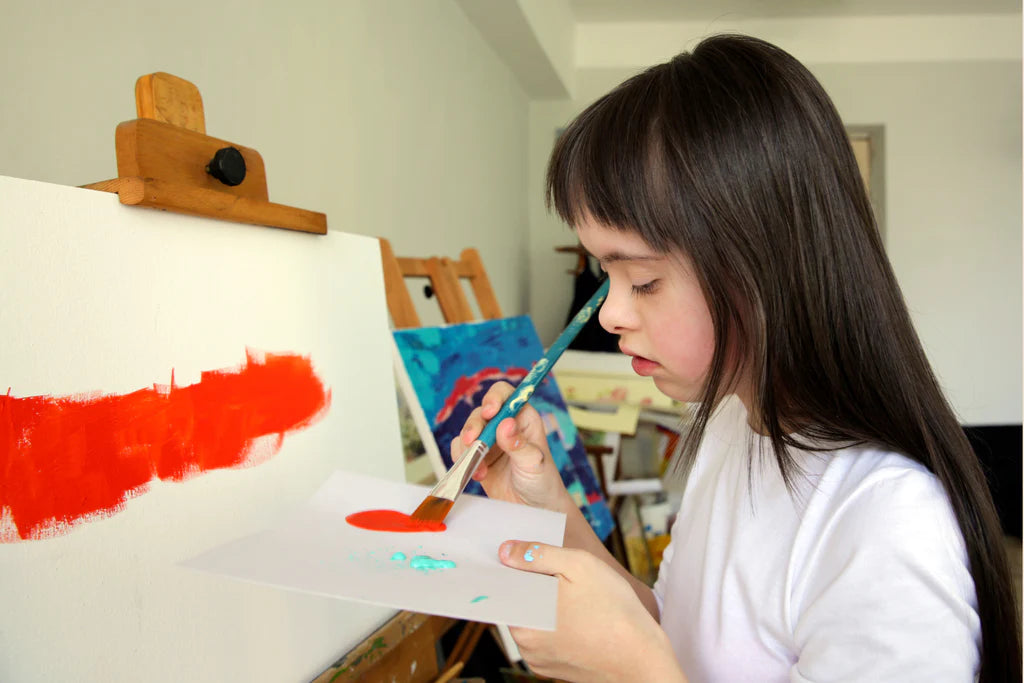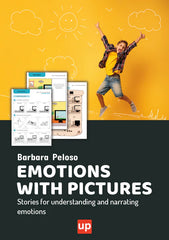Painting has long been celebrated as a creative outlet that brings joy, self-expression and a sense of accomplishment. Yet its transformative power transcends aesthetics. In this blog post, we will delve into the world of painting as a tool for empowering children facing difficulties.
From building self-confidence to promoting self-expression and overcoming challenges, we explore how painting can positively impact children's lives.
In particular, we look at the unique experiences of children with autism and physical disabilities, shedding light on the ways in which painting can help them to thrive.
 Understanding the challenges:
Understanding the challenges:
Children who face challenges, whether they are learning difficulties, emotional struggles, or physical limitations, often face barriers that can hinder their self-esteem and overall well-being. It is important to recognise the impact of these challenges and look for ways to effectively support them.
The healing power of painting:
Painting serves as a therapeutic outlet, allowing children to express themselves when words can frustrate them. It becomes a non-verbal form of communication, allowing children to convey their thoughts, feelings and experiences. In addition, painting promotes relaxation, mindfulness and emotional release, providing children with a safe space to explore their feelings and find comfort in the creative process.
Promoting self-expression and creativity:
One of the remarkable aspects of painting is its ability to promote self-expression and creativity. One of one of the characteristics of painting is its ability to encourage children to explore their imagination and to express themselves freely through the movements of the brush.
Painting cultivates problem-solving skills and fosters innovative thinking, enabling children to approach challenges from different perspectives.
By embracing their artistic abilities, children develop a sense of identity and self-esteem that extends far beyond the canvas.
Building self-confidence through artistic achievement:

Setting goals and achieving tangible results through drawing can be a powerful source of self-confidence for children with difficulties. The process of creating art allows them to set achievable challenges, celebrate their achievements and monitor their growth over time.
Real-life success stories abound, highlighting how drawing has empowered children and boosted their confidence, providing them with a new belief in their abilities.
Creating a supportive environment:
Creating a safe and non-judgmental space for children to draw is crucial.
For children with autism, painting becomes a sensory outlet, allowing them to engage their senses and express themselves in a non-verbal way. Understanding their unique sensory sensitivities and providing appropriate materials and accommodations is essential for their comfort and self-expression.
Similarly, for children with physical disabilities, adaptive tools and accommodations are essential to ensure accessibility and inclusion. By embracing their perspectives, adapting techniques and celebrating their abilities, we can create an environment where all children can flourish.

Overcoming obstacles and embracing growth:
While the artistic journey can present challenges and setbacks, it is important to instill in children the values of perseverance, resilience and self-acceptance. By overcoming obstacles and turning failures into learning opportunities, children can develop valuable life skills that extend beyond the realm of art. The process of painting becomes a metaphor for embracing growth and overcoming adversity.
Creating a supportive environment for children with difficulties to engage in painting requires the active involvement of parents.
At Upbility.net, we have the right tools to support behavioral support, language development, communication, social skills, etc.! All our materials can be used by families and specialists - at home or in the classroom.
As a parent, you play a key role in nurturing your child's artistic endeavours. Start by understanding their unique challenges and needs, whether they have autism or physical disabilities.
For children with autism:
- Provide a calm and structured space for drawing, taking into account their sensory sensitivities.
- Use calming paints, different paint textures and visual aids to enhance their painting experience.
For children with physical disabilities:
- Ensure that the physical facility is accessible and adaptable to their needs, such as providing adaptive gear and adjustable seating.
- Encourage and celebrate your child's artistic expressions, emphasising their individuality and creative development.
Show support and patience by allowing them to explore at their own pace.
By creating an inclusive and supportive environment, you can help your child gain confidence, express themselves and experience the transformative power of drawing.
Schools play a vital role in supporting children with difficulties to take up painting and build their confidence.
Recognising the therapeutic benefits of art, schools can integrate painting into their curriculum and create dedicated spaces for artistic expression.
Teachers can receive training on inclusive practices and strategies for supporting children with autism or physical disabilities.
They can work with art therapists or specialists to develop individualized projects that meet each child's unique needs.
Schools can also provide adaptive tools and materials to ensure accessibility for all students.
In addition, organizing art exhibitions or displaying students' artwork can help boost their confidence and celebrate their achievements.
By creating an inclusive and supportive school environment, teachers can enable children with difficulties to explore their artistic potential, express themselves and develop a sense of pride in their artistic abilities.
Specialist therapists, such as art therapists, can benefit greatly from incorporating painting as a therapeutic tool for children with difficulties.
Through their specialized training and expertise, these therapists can create a safe and supportive space for children to engage in the artistic process.
Using painting techniques tailored to each child's specific needs, these expert therapists can facilitate self-expression, emotional regulation and personal growth.
They can guide children with autism in exploring sensory experiences and non-verbal communication through art.
For children with physical disabilities, specialist therapists can adapt painting techniques and materials to ensure accessibility, enabling them to express themselves creatively.
Using painting as a therapeutic modality allows these therapists to build trusting relationships with their clients, promote self-esteem and help children overcome challenges. By incorporating painting into their practice, specialist therapists can unlock the transformative potential of art, enhancing resilience, confidence and wellbeing in children with difficulties.
Art Therapy as a tool for children with difficulties
Art therapy is a powerful form of therapeutic intervention that utilizes the creative process of art making to promote healing, growth and self-expression.
Through art therapy, individuals, including children with disabilities, can explore their feelings, thoughts and experiences in a safe and non-verbal way.
Using painting as a tool within art therapy allows for deep introspection, self-awareness and the development of coping strategies.
Art therapists, trained in psychology and art, guide individuals through the artistic process, offering support, interpretation and validation. By engaging with painting, individuals can tap into their inner resources, express themselves authentically, and gain insights into their emotional well-being.
Art therapy provides a platform for children with difficulties to communicate, process trauma, build resilience and enhance their self-esteem. It offers a unique avenue for self-exploration and empowerment, allowing individuals to utilize the strokes of a paintbrush to navigate their therapeutic journey.
Conclusion:
Painting has the potential to be a transformative tool for children with difficulties. Through its therapeutic power, it allows them to find their voice, build confidence and celebrate their achievements. By creating a supportive environment that embraces their unique experiences, we empower children with autism to engage in sensory exploration and provide adaptive opportunities for children with physical disabilities. Let us unlock the strokes of confidence within these remarkable children, enabling them to flourish as they explore the world of art.
Original content from the Upbility writing team. Reproduction of this article, in whole or in part, without credit to the publisher is prohibited.
You can also read:











